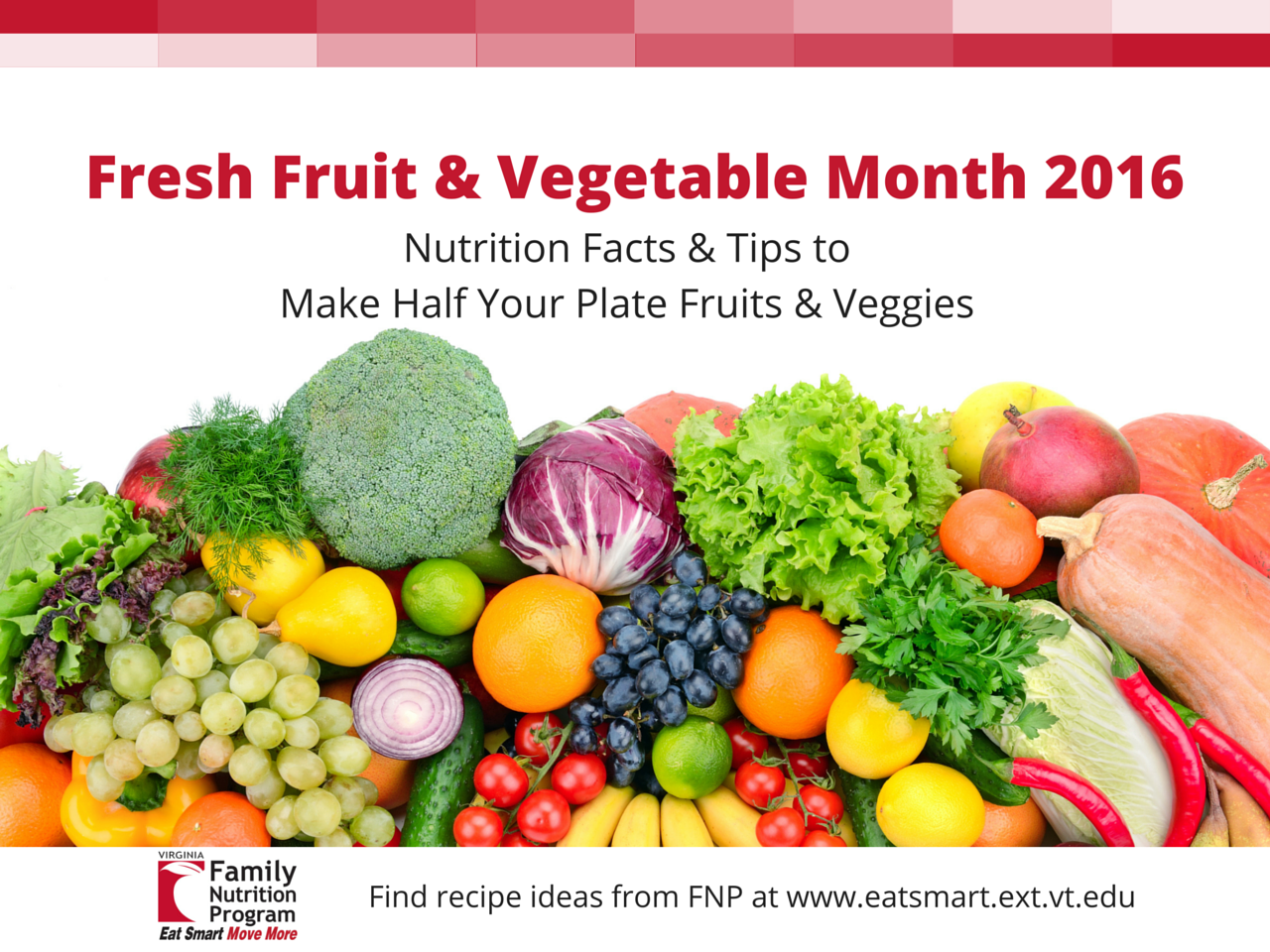June is National Fresh Fruit and Vegetable Month. With the summer growing season kicking into full swing, I can’t think of a better time to focus on eating more fresh fruits and veggies. If you’re like most Americans who don’t eat enough fruits and veggies, this is your reminder to make half your plate fruits and vegetables this month.
Nutrition Facts
Fruits and vegetables are packed with the nutrients our bodies need for healthy growth and development. They provide many important vitamins and minerals as well as dietary fiber. Since most fruits and veggies have a high water content, they also help keep us hydrated. That’s why watermelon is so satisfying on a hot day. Eating a healthy diet with lots of fruits and vegetables can help reduce the risk of heart disease, including heart attack and stroke and protect against certain types of cancers.
Vegetables are divided into different subgroups based on the different combinations of nutrients they provide.This is why it’s important to vary your veggies and eat some from all the subgroups throughout the week.
- Dark-green vegetables are higher in vitamin K
- Red and orange vegetables are higher in vitamin A
- Dried peas and legumes are higher in dietary fiber and protein
- Starchy vegetables are higher in potassium
Vitamins
- Folate helps the body make red blood cells and prevents neural tube defects in unborn babies.
- Vitamin A keeps eyes and skin healthy and helps to protect against infections.
- Vitamin C helps healing, keeps teeth and gums healthy, and increases iron absorption.
- Vitamin K helps blood clotting and is important for bone health.
Minerals
- Potassium helps to control blood pressure, keep bones stronger, and may also prevent kidney stones.
- Vegetables that are good sources of potassium include sweet potatoes, white potatoes, white beans, tomatoes, beet greens, soybeans, lima beans, spinach, lentils, and kidney beans.
- Fruits that are good sources of potassium include bananas, prunes and prune juice, dried peaches and apricots, cantaloupe, honeydew melon, and orange juice.
- Magnesium is involved in over 300 chemical reactions in the body, such as building proteins and bone, conducting nerve and muscle signals, regulating blood pressure and blood sugar, and producing energy from digestion.
- Fruits and vegetables that are good sources of magnesium include spinach, black beans, edamame, avocados, potatoes, kidney beans, bananas, raisins, apples, and carrots.
Dietary Fiber
Fiber helps reduce cholesterol levels and may help prevent heart disease. Fiber is important for digestion and keeps you regular. Eating high fiber foods can help keep you full with fewer calories, which may reduce the risk of obesity and type 2 diabetes. Fruit juice loses the fiber found in whole fruit during processing, which is why eating fruit is better than drinking it.
Fresh Fruits and Vegetables in Virginia
Farmers across Virginia grow a wide variety of fruits and vegetables. Virginia is known for its apples, but we’re also one of the largest producers of fresh tomatoes and grapes. This list from Virginia Grown shows a selection of fruits and vegetables grown in the state. But if you’ve visited your local farmers market, you’ll know that there are many other fresh fruits and vegetables available. What’s your favorite fresh fruit or vegetable?
Shifts to Make Half Your Plate Fruits and Vegetables
As I mentioned earlier, very few Americans eat enough fruits and vegetables recommended by the Dietary Guidelines. Try these shifts to make half your plate fruits and vegetables and enjoy eating smart with fresh produce.
- Snack on fresh fruits and vegetables, like carrots, broccoli, grapes, or peaches.
- Satisfy your sweet tooth with fruit instead of dessert.
- Increase the amount of vegetables in mixed dishes, like stir-frys, casseroles, or omelets.
- Serve salads or a vegetable side dish at dinner every night.
- Eat a piece of fruit with breakfast every day.
- Build your meals around fruits and vegetables when meal planning.
- Plant a garden and enjoy homegrown fruits and vegetables.
- Create flavored water with sliced fruits and veggies in place of sugary drinks. Strawberries, mint, cucumber, and citrus fruit are all great options.
- Cool off this summer with a fruity homemade smoothie or popsicle. You can even get adventurous and add some veggies to your recipes.
What are other ways you’ve found to help your family eat more fruits and vegetables?



Great articles! Thanks for the tips!